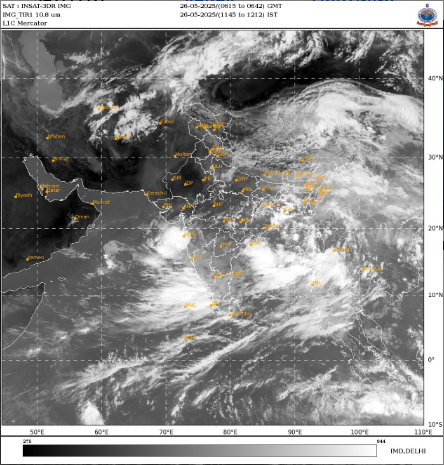

Early Monsoon Greets India: A Confluence of Favorable Conditions
The much-anticipated southwest monsoon, the lifeline for a significant portion of India's agriculture and economy, made an early appearance in 2025. The India Meteorological Department (IMD) announced the monsoon's onset over Kerala on May 24th, a notable eight days prior to its normal arrival date of June 1st. This early commencement of the four-month rainy season, which delivers over 70% of the country's annual rainfall, was last observed with such punctuality in 2009 when it arrived on May 23rd. A complex interplay of various large-scale atmospheric, oceanic, and local factors created what the IMD termed "very favorable conditions" for this premature onset.
Defining the Monsoon's Arrival
The IMD employs a stringent set of criteria to officially declare the monsoon onset, typically after May 10th each year. These include:
Once all these conditions are met, the onset is declared on the second day of these observations. This year, the early onset over Kerala was accompanied by a simultaneous arrival over the entirety of Lakshadweep, Mahe (Puducherry), significant parts of the Arabian Sea and the Bay of Bengal, with monsoon winds also reaching parts of southern Karnataka and Mizoram in Northeast India.
Key Factors Driving the Early Onset in 2025
The IMD highlighted several crucial elements that aligned to favour the early monsoon arrival, which had already made its presence felt over the south Andaman Sea around May 13th, well ahead of its normal May 21st date.
Other contributing elements included a favorable pressure gradient and the formation of a monsoon onset vortex, a cyclonic circulation in the Arabian Sea, both of which play a role in heralding a strong monsoon.
Initial Coverage and Advancement
On its onset day, the southwest monsoon had already made significant inroads, covering the southwest and east-central Bay of Bengal, the Maldives and Comorin regions, and the south and central Arabian Sea, in addition to Kerala, Lakshadweep, and Mahe. Its early and simultaneous arrival over parts of Northeast India (Mizoram) and southern and coastal Karnataka and Tamil Nadu (excluding northern parts) was particularly noteworthy. Under normal circumstances, the monsoon reaches central Kerala and then Karnataka around June 5th, making this year's onset over these regions significantly earlier, by over 10 days in Karnataka.
By Sunday, May 25th, the second day since the onset, the monsoon had further advanced. It covered more parts of the west-central and east-central Arabian Sea, extended its reach over more of Karnataka, encompassed the entirety of Goa, and made inroads into some parts of Maharashtra. In the east, it advanced into parts of the west-central and north Bay of Bengal and further into Mizoram, Manipur, and Nagaland. The Northern Limit of Monsoon (NLM), the imaginary line tracking its progress, was noted to pass through Devgad, Belagavi, Haveri, Mandya, Dharmapuri, Chennai, Aizawl, and Kohima.
The early and vigorous start to the 2025 monsoon season, driven by a confluence of favorable large-scale and local meteorological conditions, is a welcome development for India. It sets a positive tone for the crucial agricultural season and water resource replenishment across the country.